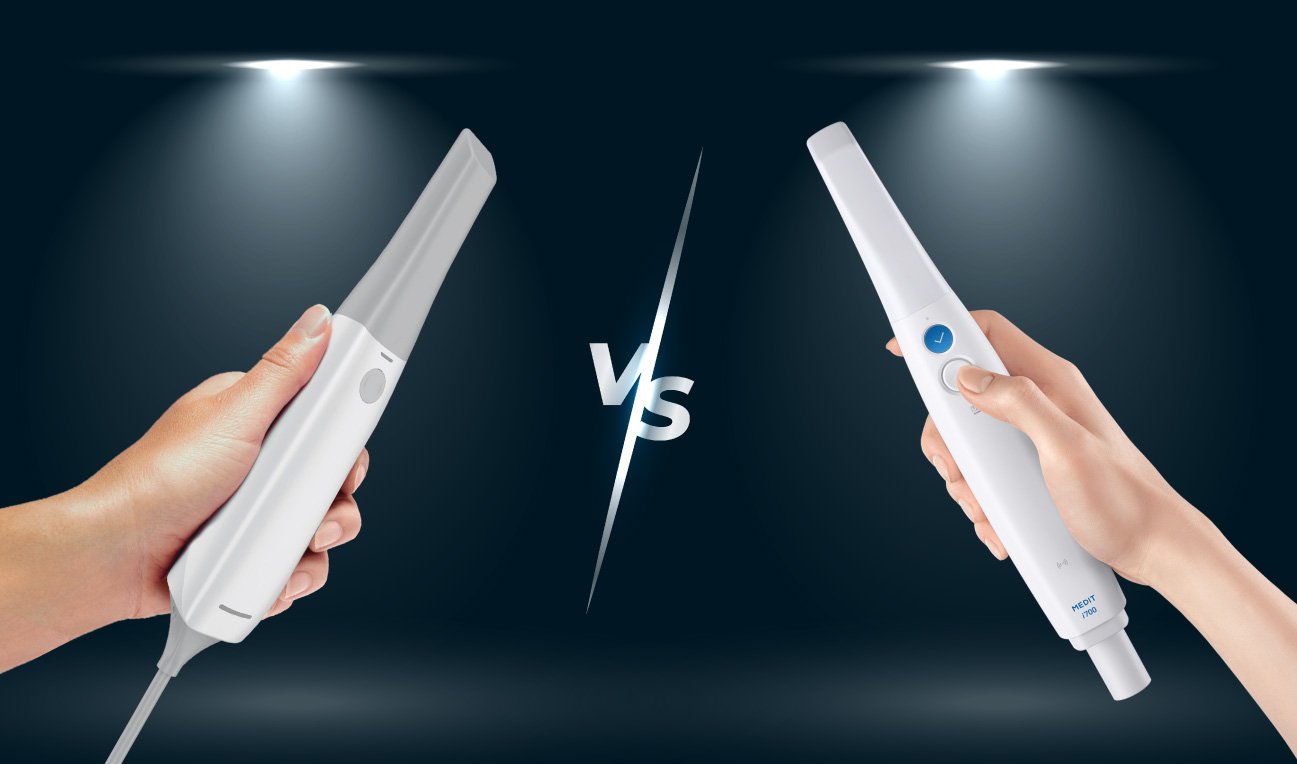Wired vs Wireless Intraoral Scanners – What’s Actually Better?
Let’s be honest: buying an intraoral scanner isn’t exactly cheap, so when you’re making the call between wired or wireless, you want to get it right. Both options are solid — but they come with real pros and cons that can make or break your day-to-day workflow.
If you’ve been searching “Are wireless intraoral scanners worth it?” or “Should I buy a wired scanner?” — you’re in the right place. Here’s what you need to know (without all the sales fluff).
First off — What even is an intraoral scanner?
If you’re new to the tech: an intraoral scanner (IOS) takes a digital 3D impression of the patient’s mouth. You wave it around like a wand, and within seconds you’ve got a high-res, full-colour model — no goo, no mess.
Big names like Medit, 3Shape Trios, iTero, and Fussen all have options. And most of them now offer both wired and wireless models, like the popular Medit i700 and its wireless twin.
Wired Intraoral Scanners — Pros & Cons
Pros
Power always on – It’s plugged in, so no need to worry about charging or swapping batteries mid-scan.
Stable connection – USB cable means consistent data transfer. No dropouts.
Lighter feel – No batteries inside means less weight in your hand.
Cheaper – Usually quite a bit more affordable than wireless versions.
Cons
That cable... – It gets in the way. No matter how neat your setup is, you’ll catch it on something eventually.
Less flexible – If you’re moving between rooms or chairs, dragging cables can be annoying.
Cables wear out – Over time, constant bending can wear them down.
Wireless Intraoral Scanners — Pros & Cons
Pros
No wires, no problem – You’ve got full movement freedom. Makes scanning easier, especially with tricky posterior angles.
Tidy setup – No cables = cleaner operatory.
Looks sharp – Sleek, wireless gear just gives your practice that high-tech feel.
Cons
Battery life – Most will last you around 30–60 minutes, depending on how you scan. You’ll need to charge or swap batteries.
Heavier – All that wireless tech and battery adds some weight.
More expensive – Expect to pay a few grand more than the wired version usually
Potential for lag – Some report the occasional wireless hiccup, or disconnection which interrupts scanning, with any wireless device they sometimes lose connection im sure you have had wireless headphones which have all of a sudden just decided to disconnect while listening to your latest earwig tune. All wireless devices do this from time to time, so be aware, and prepared for it to happen.
So… Which One’s Better?
Well, that depends on your setup.
Go Wired if:
You’re mostly scanning in one room
You want a budget-friendly scanner that just gets the job done
You like simple plug-in-and-go equipment
Super reliable performace no matter the environement.
Go Wireless if:
You work across multiple rooms or chairs
You want that clutter-free, cable-free setup
You’re after the smoothest possible scanning experience (even if it costs a bit more)
Scanner Options to Consider
If you’re shopping:
Fussen S6500 – Entry level price point for a mid range Intraoral scanner, great as a entry in to intraoral scanners, or as a second scanner in the practice without the over bearing price tag. The other great add on is its the only scanner that comes with a laptop as part of the package price at an amazing £6500. Learn more here:
Medit i700 (Wired) – Affordable, fast, and probably the best-value scanner out there right now.
Medit i700 Wireless – Same performance as the wired one, just wireless. Perfect if you want more freedom.
3 Shape TRIOS 5 Wireless – Premium scanner, it does come with a premium price tag but superb scanner. Lightweight and seriously slick.
Final Thoughts
Look — both wired and wireless intraoral scanners are great. It’s not a matter of right or wrong, it’s about what fits your day-to-day workflow.
If you’re tight on budget, work in a fixed room, and want a lightweight tool: go wired.
If you value flexibility, aesthetics, and ease of movement — and don’t mind spending a bit more — go wireless.
And if you're stuck in decision limbo, get a demo. Holding it in your hand will tell you more than any spec sheet ever will.




